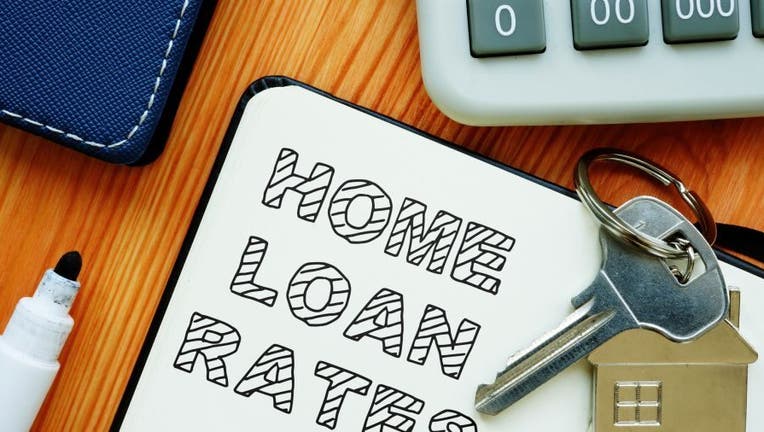Mortgage rates hit another record low amid coronavirus pandemic

Your credit score will play a big role in what rate you get. Here’s how to boost it. (iStock)
Virtually anytime you borrow money, there’s a cost for the privilege. That’s no different for mortgage loans, which you rely on during the home buying process.
Mortgage rates are generally lower than interest rates from other types of debt — but lately rates have been astonishnigly low, as the coronavirus pandemic continues to wreak havoc on the U.S. economy. The financial chaos already led the Federal Reserve to make emergency rate cuts twice since March.
If you're a first-time homebuyer or you simply want to better meet your financial goals, you'll probably want to consider a mortgage refinance to save more money on your monthly payments and boost your savings account. But before you make any big decisions about your home loan, here’s what you should know about mortgage rates.
What are current mortgage rates today?
Mortgage rates are changing constantly based on housing market conditions where you live and by the lender, but it’s possible to get an average rate and payment based on the U.S. market data as a whole.
As of July 16, there have been record-low mortgage rates. The average rate for a 30-year fixed mortgage fell below 3 percent for the first time in 50 years to 2.98 percent, according to Freddie Mac, and the rate for a 15-year fixed mortgage fell to 2.48 percent average.
Based on the current mortgage and refinance rates, it's likely now is a good time for you to refinance. To see how much you could save on monthly payments today, crunch the numbers and compare rates using Credible's free online tool.
WHY IT'S A GOOD IDEA TO REFINANCE YOUR MORTGAGE WHILE RATES ARE LOW
Of course, that doesn’t mean that’s the rate borrowers can expect when applying for a mortgage. Your interest rate will largely depend on your credit history and income.
How to get the lowest mortgage rate possible
Because mortgage loans are much longer than most loan types, you’ll still end up paying tens or even hundreds of thousands of dollars in interest despite low mortgage rates.
As such, it’s crucial to work to qualify for the lowest rates possible. See what kind of rates you qualify for today through Credible.
TODAY'S MORTGAGE RATES ARE ASTONISHINGLY LOW - HOW TO LAND THE BEST REFINANCE PRICE
Even just a slight decrease can help boost your savings account. For example, in our previous example, an $898.09 monthly payment over 30 years amounts to $323,312.40 in payments, including $123,312.40 in interest.
If you could qualify for a 3.25 percent rate instead, your monthly payment would be $870.41, and you’d pay $113,348.55 in interest—almost $10,000 less.
Here are some tips on how to qualify for low-interest rates:
Improve your credit score: Check your credit score and report to identify areas where you can improve, then take steps to address them.
Pay down debt: Your debt-to-income ratio—how much of your gross monthly income goes toward debt payments—is an important factor mortgage lenders consider. As you pay off debts, you’ll have more room for a mortgage payment.
Shop around: Each lender has different criteria for calculating interest rates, so it’s crucial to take time to shop around and compare rates from multiple lenders before settling on one. Visit Credible to compare mortgage rates and get preapproved.
Build up a down payment: The more money you put down, the higher your chances of getting a lower interest rate. This is because the down payment helps reduce the lender’s exposure to risk.
Also, keep in mind that mortgage rates and mortgage refinance rates may or may not be similar, depending on market conditions. But if you don’t qualify for the rate you want now, or you see a mortgage rate drop down the road, you can secure a mortgage refinance later to get a lower one.
To ensure you’re getting the best rate, though, work on your credit, pay down debt, bolster your savings account, and compare rates with Credible.
HOW TO INCREASE YOUR CREDIT SCORE FAST
Understanding different types of mortgage rates
Buying a house with a 30-year mortgage loan is a major financial commitment, not only for you but also for lenders. As a result, you can expect to pay interest in exchange for financing.
Home loan rates are presented in their annualized form, and they’re used to help amortize the loan.
For example, if you have a $200,000 loan with a 30-year repayment plan and a 3.5 percent interest rate, you could use a cost calculator to determine your monthly mortgage payment, which would be $898.09.
WHAT ARE THE CLOSING COSTS FOR SELLING A HOME?
There are a couple of types of mortgage rates you may come across as you research your options:
Fixed rates: With a fixed-rate mortgage, your interest rate remains the same for the life of the loan.
ARM rate: An adjustable-rate mortgage (ARM) loan typically starts off as fixed for a set period—say, three, five, seven or 10 years—then changes every year after that based on the current market rates.
In most cases, a fixed-rate mortgage may be a better option because it provides more certainty. If, however, you don’t expect to be in your new home for longer than an ARM’s fixed period, you could save more money with that option.

